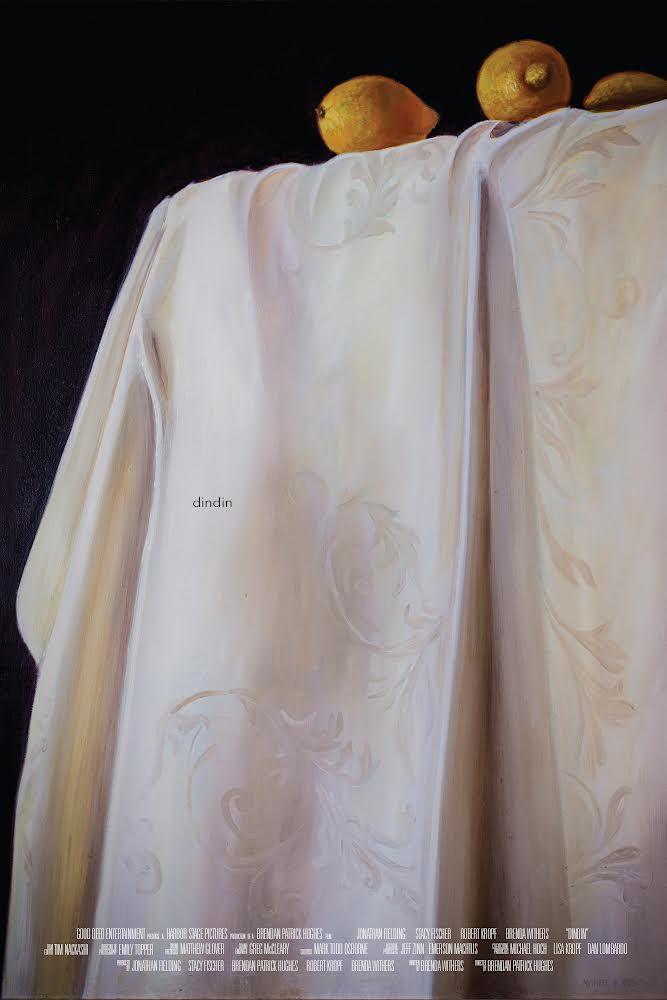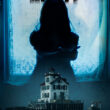Dindin, an indie film directed by Brendan Patrick Hughes and written by Brenda Withers, aims to capture the true essence of relationships. What begins as a seemingly ordinary dinner party between four characters soon unravels into a gripping and darkly humorous exploration of human behavior, revealing the tension, power dynamics, and social expectations that lie beneath polite conversation.
Available to watch on Amazon Prime and Apple TV on October 8th, Dindin promises to leave a lasting impression on viewers with its genre-defying approach. The film’s premise is simple—a dinner gathering—but the execution is anything but. As the evening progresses, sharp words turn into exposed secrets, and social niceties are thrown aside. The film’s brilliance lies in how it shifts between comedy, drama, and even horror, creating a narrative that refuses to adhere to traditional genre boundaries.
“Dinner parties put a lot of moral questions on the table,” explains Brenda Withers, who not only wrote the screenplay but also stars as Darlene, one of the film’s four central characters. “Who eats what, who holds their tongues, how everything gets paid for—so it was a naturally rich canvas to explore”.

The film’s plot may revolve around a dinner party, but the real focus is on the interactions between the four characters—Pierre, Emily, Darlene, and Ricky. What starts as small talk and light conversation quickly descends into a high-stakes emotional battle, where power struggles and long-held grievances come to the forefront. These moments are captured with precision by cinematographer Emily Topper, whose experience in documentary filmmaking adds a layer of authenticity and intimacy to Dindin.
When asked about cinematographer Emily Topper’s work (Pretty Baby: Brooke Shields, Conan Must Go), director Brendan Patrick Hughes explained, “Most of the shots in the film are of a human face, which we knew would light up those recognition centers in the brains of the audience and not let them go.”
The visual style of Dindin is one of its many strengths, but it is the film’s ability to balance multiple genres that truly sets it apart. As Withers explains, the film started as a comedy of manners but quickly expanded into something much larger. “The film’s story was inspired by the many fancy dinners I’ve attended as a starving artist. Until pretty recently, showing up to one of those as a vegetarian usually raised some eyebrows and some beggars-shouldn’t-be-choosers undertones. Dinner parties put a lot of moral questions on the table—who eats what, who holds their tongues, how everything gets paid for—so it was a naturally rich canvas to explore.”
Indeed, Dindin toys with audience expectations. The sharp dialogue, often laced with dark humor, contrasts starkly with moments of genuine emotional vulnerability. Each character is carefully constructed to serve as a mirror for the audience, forcing viewers to confront their own assumptions about human interaction. This tension is heightened by the confined setting, which Hughes refers to as “an alchemical brew of four human beings.” The decision to keep the film largely contained within the dinner party setting enhances the claustrophobia and heightens the stakes.
The chemistry between the cast— Brenda Withers, Jonathan Fielding, Robert Kropf, and Stacy Fischer—adds an additional layer of complexity to the film. Having worked together in stage productions, the actors bring a familiarity and depth to their performances that is rarely seen in indie films. Well there’s just a level of trust there that you cannot manufacture. In other words, there’s a comfort and sense of ease, rhythmically, that comes from years of bouncing off that other person in a hundred different situations. So you’re able to be much more free, and much more open. It’s trust,”says Kropf.
The film’s dark humor and sharp social commentary also make it a standout in the independent film landscape. As the characters engage in increasingly volatile conversations, the underlying question becomes clear: what are we really doing when we sit down for dinner with others? Are we truly connecting, or are we simply performing roles based on societal expectations? The dinner party setting, often associated with civility and decorum, becomes a stage for chaos and confrontation.
Brenda Withers sums up the film’s appeal: “Dindin is perhaps post-genre. It flirts with becoming a murder mystery, it flirts with resulting in the grisly violence of a thriller, it flirts with the comedy of manners like the films of Whit Stillman. In the end, it subverts all expectations and presents something even more radical: the almost-impossibility of true human connection.”
Released only recently, Dindin is poised to become a favorite among fans of indie cinema. Its ability to mix humor, suspense, and a touch of horror within a seemingly mundane setting makes it a refreshing departure from formulaic filmmaking. With its October 8th release, Dindin offers a unique experience for viewers who are ready to challenge their perceptions of genre and human behavior.
For those looking to engage with a film that offers both entertainment and thought-provoking commentary, Dindin is a must-see. It is a cinematic experiment that proves even the most ordinary settings can be transformed into something extraordinary, and that beneath the surface of polite conversation lies the potential for chaos.









